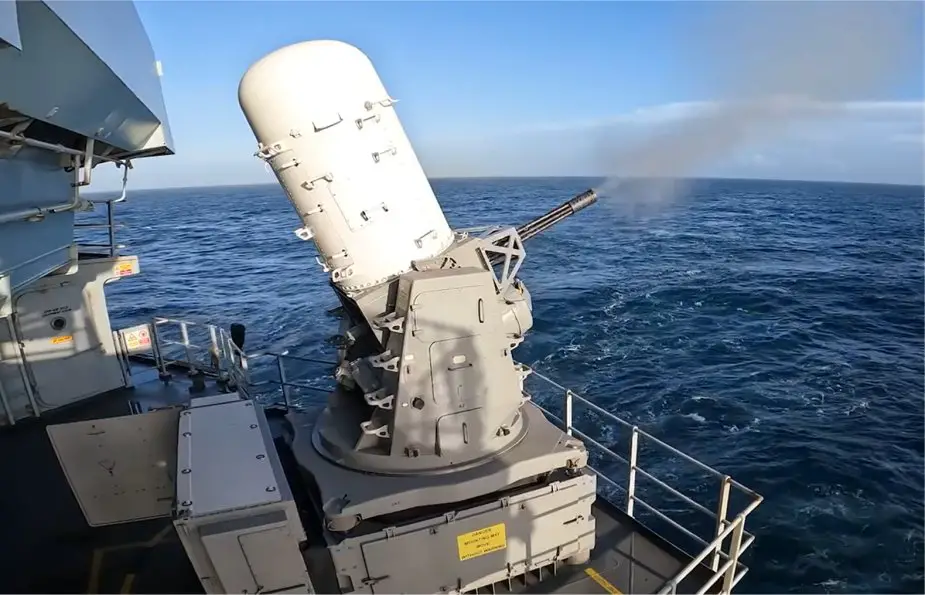Breaking news
UK: Babcock wins contract to support Royal Navy's Phalanx CIWS.
According to a PR published by Babcock on October 30, 2023, the firm has been granted a three-year contract valued at £17.9 million to persist in delivering crucial support for the Royal Navy's Phalanx Close-In Weapon Support System (CIWS).
Follow Navy Recognition on Google News at this link
 Phalanx CIWS on the aircraft carrier HMS Queen Elizabeth. (Picture source: Royal Navy)
Phalanx CIWS on the aircraft carrier HMS Queen Elizabeth. (Picture source: Royal Navy)
The Phalanx CIWS, known for its rapid-fire, computer-aided, radar-guided gun technology, is designed to counter anti-ship missiles and other imminent threats. It is an integral part of various Royal Navy vessels, including the Albion-class landing platform dock, Royal Fleet Auxiliary, Type 45 Class destroyer, and Queen Elizabeth Class aircraft carriers.
Since 2006, Babcock has been instrumental in providing in-service support for the Phalanx system, a role further solidified by this new contract awarded by the UK Ministry of Defence's Defence Equipment & Support (DE&S) organization.
Under this contract, Babcock will offer support for up to 41 systems, encompassing nine overhauls and upgrades. The responsibilities extend to logistics management, obsolescence management, and ensuring the availability and reliability of the Phalanx.
Phalanx CIWS
At its core is the 20mm M61 Vulcan 6-barreled Gatling cannon, structured to provide a defensive envelope against anti-ship missiles among other threats. The system operates with a level of automation, although human oversight is maintained to ensure its functioning.
Over time, there have been different models of the Phalanx CIWS with slight variations in mass.
The barrel length in the Phalanx CIWS has seen modifications with the Block 1B variant possessing a longer barrel compared to earlier models, likely contributing to an improved effective firing range.
The system has the ability to traverse and elevate at notable speeds, enabling it to track fast-moving targets swiftly. The rate of fire is distinct, especially in the Block 1A/1B variants, which are capable of discharging rounds at a higher rate, aiming to neutralize incoming threats promptly.
The shells utilized by the Phalanx CIWS are structured for penetration and incendiary effects, tailored to address both armored and unarmored threats. The high muzzle velocity is meant to ensure timely reach of rounds to their targets, contributing to the system's intended effectiveness.
The guidance system of the Phalanx CIWS includes Ku-band radar and Forward Looking Infrared Radar (FLIR), essential for accurate tracking and engagement of targets. This combination of radar and optical tracking systems is indicative of the technological integration within the Phalanx CIWS, aimed at functioning as a defensive measure in naval warfare scenarios.


























